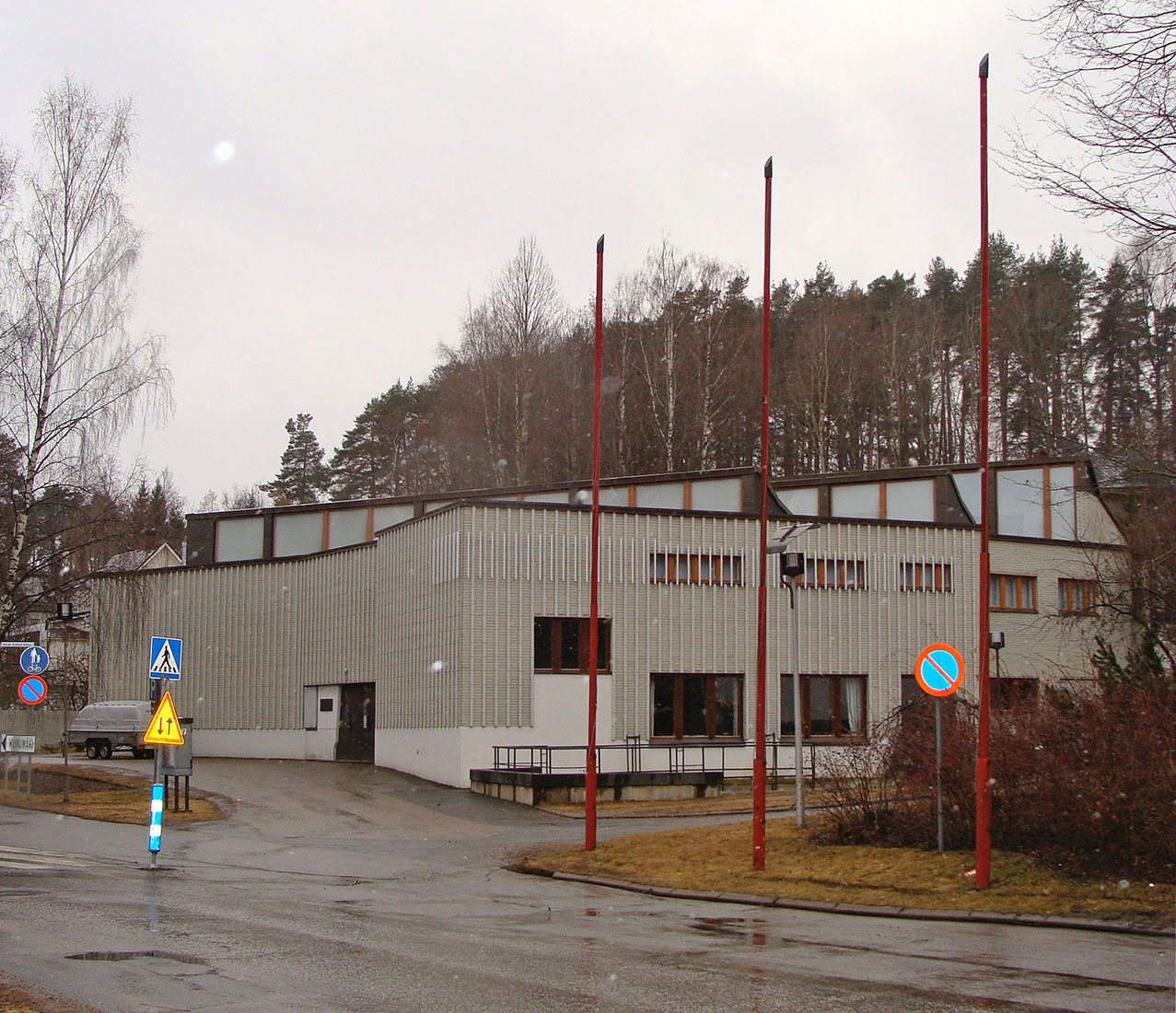 |
 |
 |
 |


Alvar Aalto Museum
Alvar Allon katu 7, Jyväskylä
1971 - 1974
The design by Alvar Aalto for this museum building was finished in 1973. The building is located on a slope leading down towards Lake Jyväsjärvi, and is in immediate neighborhood to the Central Finland Museum. Together, these two institutions create a cultural centre near to the University of Jyväskylä. The design of the two buildings is separted by a decade, what is clearly visible in the elevations. While the white and rectangular shaped façade of the Central Finlad Museum is considered to be a reflection of the geometric practicality of Functionalism, the newer Alvar Aalto Museum appears much freeer in its form but also much more closed. The museum building is clad with light-coloured and profiled ceramic tiles above a high concrete plinth painted white. The vertical bands of these glazed tiles result in a relief that gives a strong effect of depth when the surface is washed with light. The entrance façade is completely closed, with the exception of a few tiny openings close to the doors. The massive doors are made of copper and on the left-hand side of the doorway is to be found a marble application. The three east-facing roof lights are dominating the roofscape of the building.
The irregularly shaped plan of the large exhibition area on the upper floor allows the presentation of different exhibitions at the same time without disturbing each other. Only two interior walls of the exhibition floor are fixed, so that the 700 m2 area can be divided very flexible. The exhibition space is exclusively lit from above by the three large skylights. The undulating wooden wall remembers early designs by Alvar Aalto, such as the Finnish Pavillon for the 1939 New York World's Fair exhibition. On the lower floor are to be found the main entrance with foyer and cloakrooms, an auditorium, a library, the museum shop, several service spaces and the cafeteria. From the cafeteria there are views towards a series of open-air pools on the exterior. Water is trickling from one pool to another, following a route which was once a natural stream. At the back of the building is a small flat, now containing offices, and a studio which was formerly used by the local society of artists and now is used as the museum workshop.